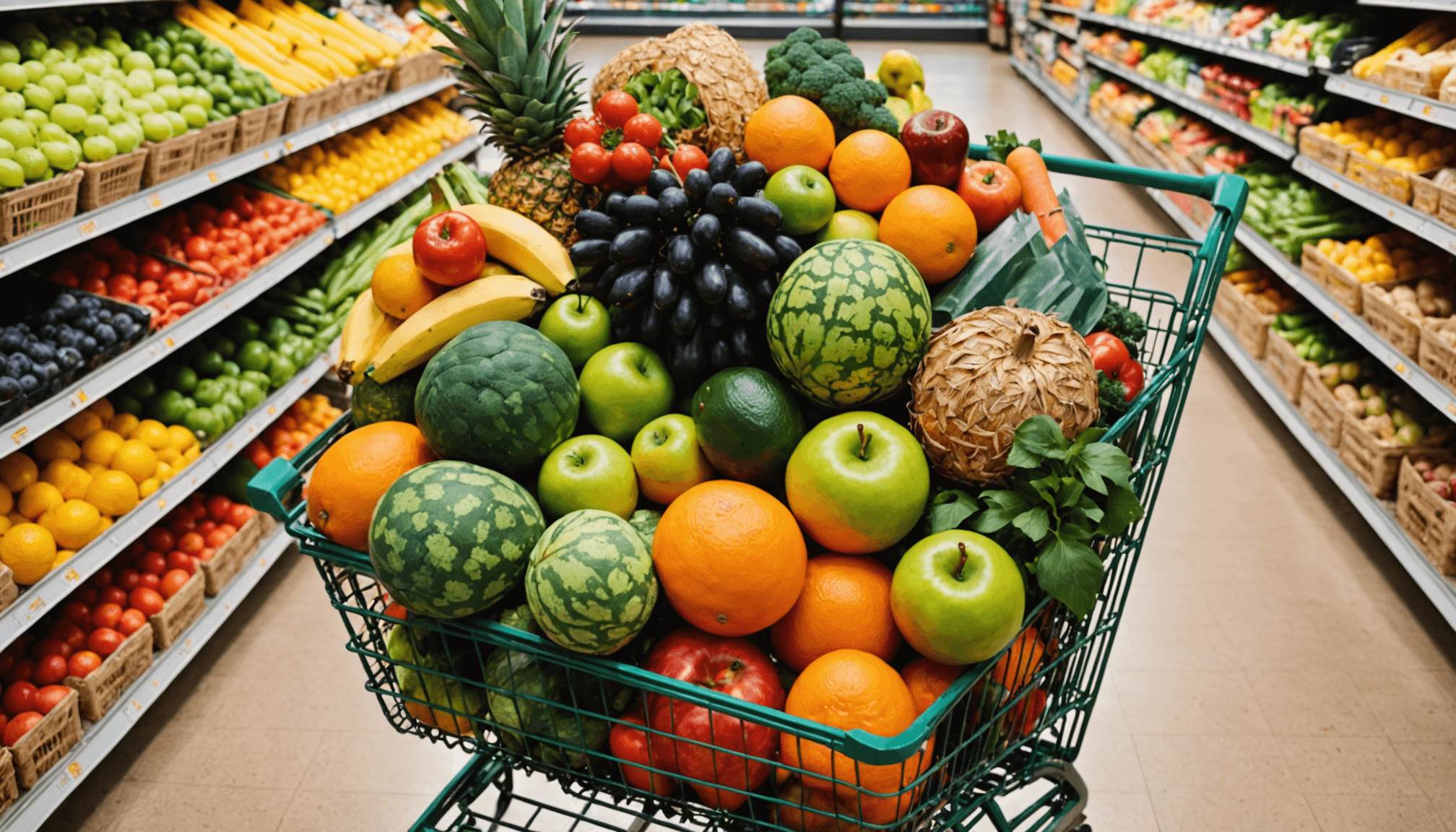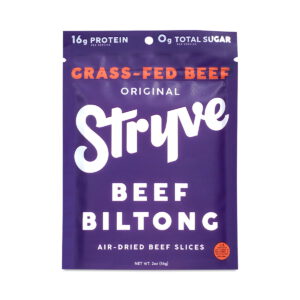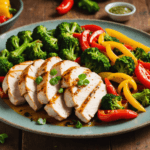- Healthy meal planning strategies
- Quick and easy recipes
- Smart grocery shopping tips
- Building a balanced plate
- Snacking solutions for busy lifestyles
- Meal prep for the week ahead
When it comes to grocery shopping for healthy meals, savvy strategies can make all the difference, especially for those navigating a busy lifestyle. Start by creating a well-organized shopping list based on your meal plan for the week. This not only streamlines your grocery run but also helps you avoid impulse purchases that often lead to unhealthy choices. Group items by categories such as produce, grains, proteins, and snacks to keep your shopping trip efficient.
Prioritize fresh, local foods when possible. Visiting your local farmers’ market can provide you with seasonal fruits and vegetables that are both nutritious and budget-friendly. In addition to supporting local farmers, these foods often have a higher nutrient content and better flavor than those that have traveled long distances. Incorporate organic options when available, especially for items on the Environmental Working Group’s Dirty Dozen list, which highlights produce with higher pesticide residues.
If you’re a vegan or looking to include more plant-based options in your diet, checklist staple ingredients like beans, lentils, quinoa, tofu, and tempeh. These items are not only rich in protein but also versatile for various meals. Consider stocking up on frozen vegetables, which retain vitamins and are usually more affordable than fresh when not in season.
Budget-conscious shoppers can take advantage of bulk buying, especially for grains, beans, and nuts. Many grocery stores offer discounts for purchasing larger quantities, and you can save by breaking larger packages into smaller portions at home. Additionally, don’t shy away from store brands; they often provide the same quality as name brands at a lower price point.
For those focused on fitness, incorporate health-driven snacks into your list, such as Greek yogurt, nut butter, and whole grain energy bars. These foods can provide the necessary fuel for workouts while being convenient for on-the-go snacking.
When shopping online, ensure your safety by using reputable websites and checking reviews. Look for stores with a clear return policy in case a product does not meet your expectations. Be mindful of delivery dates, especially with perishable items, to ensure they arrive fresh. Always check the ingredient list and nutritional information for any food product, whether obtaining it online or offline, to avoid unwanted preservatives or allergens.
With these quick tips, you can master the art of grocery shopping, turning it into a simple and enjoyable part of your healthy eating journey, even amidst a busy schedule.
Quick and easy recipes
To streamline meal preparation for those with hectic schedules, having quick and easy recipes at your fingertips can significantly alleviate the stress of healthy eating made simple. The aim is to create meals that require minimal effort without sacrificing nutrition or flavor. A few essential ingredients can help you whip together delicious meals in no time. Here are some quick and easy recipes that are perfect for busy people:
1. One-Pan Chicken and Vegetables
Ingredients:
– 2 chicken breasts
– 1 zucchini, sliced
– 1 bell pepper, chopped
– 1 cup broccoli florets
– Olive oil, salt, and pepper to taste
Preparation:
1. Preheat your oven to 400°F (200°C).
2. In a large bowl, toss the chicken and vegetables with olive oil, salt, and pepper.
3. Spread the mixture evenly on a baking sheet.
4. Bake for 25-30 minutes or until the chicken is cooked through.
This meal is not only easy to prepare but also requires minimal cleanup, making it an ideal option for busy nights.
2. 5-Minute Avocado Toast
Ingredients:
– 1 ripe avocado
– 2 slices of whole-grain bread
– Salt, pepper, and red pepper flakes (optional)
– Sliced tomatoes or radishes (optional)
Preparation:
1. Toast the slices of bread.
2. Mash the avocado in a bowl and season with salt, pepper, and red pepper flakes.
3. Spread the avocado on the toasted bread and top with sliced tomatoes or radishes if desired.
This recipe is perfect as a quick breakfast or snack packed with healthy fats.
3. Quinoa Salad
Ingredients:
– 1 cup quinoa, cooked
– 1 cup cherry tomatoes, halved
– 1 cucumber, diced
– 1 can chickpeas, rinsed and drained
– Olive oil, lemon juice, salt, and pepper to taste
Preparation:
1. In a large bowl, combine the cooked quinoa, tomatoes, cucumber, and chickpeas.
2. Drizzle with olive oil and lemon juice, then season with salt and pepper.
3. Mix and serve.
This salad can be made in advance and enjoyed throughout the week, providing a nutritious and filling option.
To help visualize these quick meal ideas and their prep times, consider the comparison table below:
| Recipe | Total Preparation Time | Main Ingredients |
|---|---|---|
| One-Pan Chicken and Vegetables | 30 minutes | Chicken, zucchini, bell pepper, broccoli |
| 5-Minute Avocado Toast | 5 minutes | Avocado, whole-grain bread |
| Quinoa Salad | 15 minutes (plus cooking quinoa) | Quinoa, chickpeas, tomatoes, cucumber |
With these quick tips and recipes, preparing healthy meals can become a seamless part of your daily routine, allowing busy people to stay nourished and energized throughout their day. Simplifying meal preparation is key to maintaining a balanced diet, even when time is limited. Whether you’re looking to cut down on cooking time or trying to find approachable dishes, these recipes will ensure that healthy eating remains attainable within your busy lifestyle.
Smart grocery shopping tips
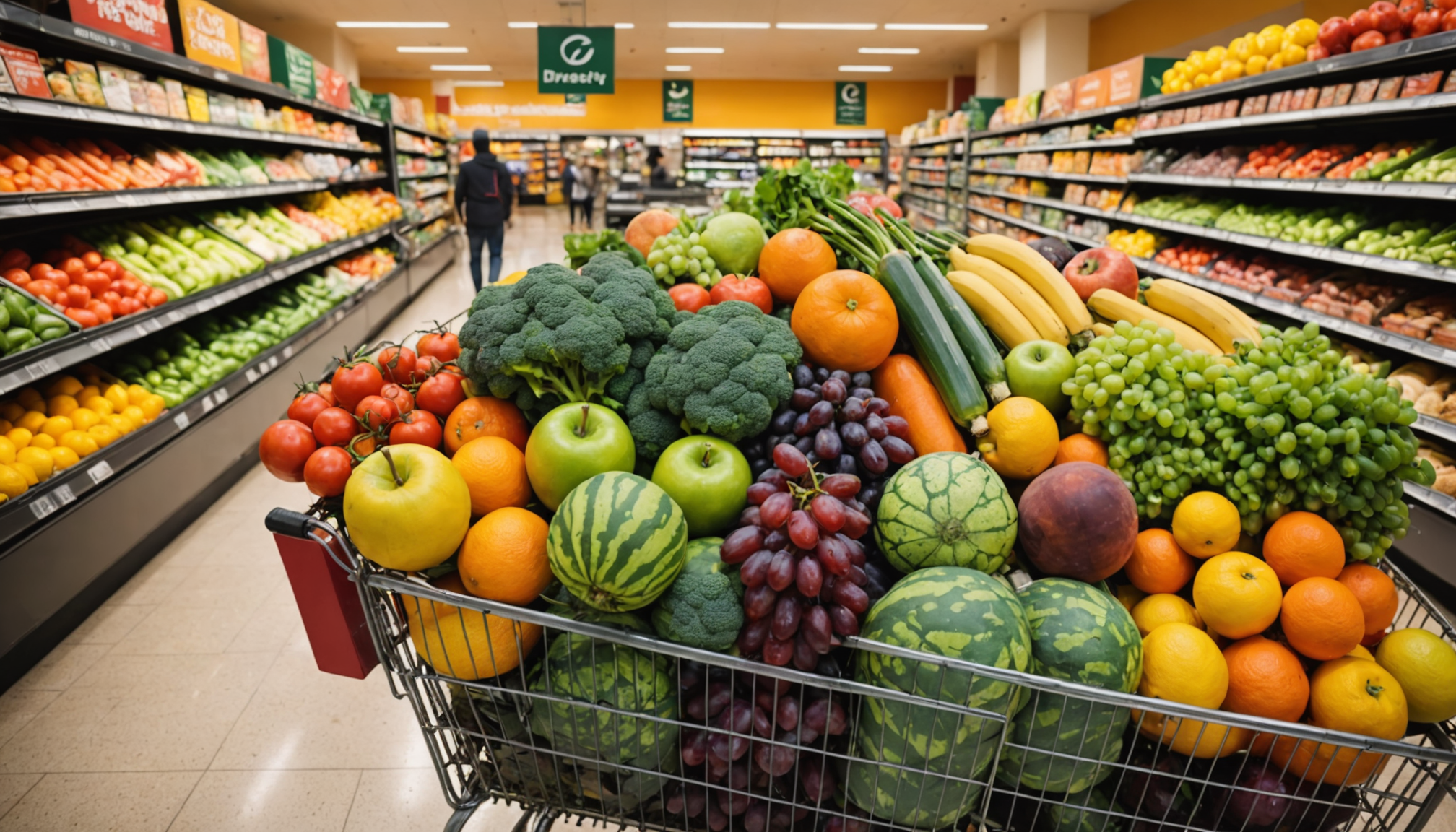
Grocery shopping can often feel like a daunting task, but with the right strategies, it can be transformed into a smooth and enjoyable experience. One of the first steps to effective grocery shopping is to establish a solid list before hitting the store or browsing online. This helps you stay focused and minimizes the chances of picking up unhealthy impulse buys.
When crafting your list, aim to include a variety of healthy foods. Focus on whole foods like fresh fruits and vegetables, lean proteins, whole grains, and healthy fats. For busy people, having a mix of fresh, frozen, and canned options can offer flexibility in meal preparation. Frozen vegetables and fruits can be a time-saving lifesaver, as they are often picked at peak ripeness and flash-frozen to retain their nutrients, making them a convenient choice for quick meals.
Local foods can also offer tremendous benefits; consider exploring farmers’ markets or local co-ops where you can find seasonal produce at reasonable prices while supporting your community. The freshness of locally grown produce often surpasses that of items shipped in from far away, which can enhance not only the taste but the nutritional value of your meals.
Vegan foods are increasingly available in grocery stores, so take advantage of plant-based alternatives such as almond milk, coconut yogurt, and various meat substitutes that are high in protein and free from animal products. Stock your pantry with staples like lentils, chickpeas, nuts, and seeds which are essential for creating nutritious meals that can be prepared quickly and easily.
When considering budget-friendly foods, look for bulk options when possible. Stores often sell staples like rice, beans, and oats at a lower cost per unit when purchased in larger quantities. Additionally, don’t underestimate the value of store brands; they frequently offer the same quality as national brands but at a significantly reduced price.
Fitness enthusiasts should prioritize foods that provide sustained energy and recovery. Some key items to consider include quinoa, brown rice, sweet potatoes, and nutrient-dense snacks like trail mix, Greek yogurt, or protein bars. These are great for quick post-workout nutrition and can easily be integrated into your diet.
When it comes to ensuring food safety, especially during online grocery shopping, always opt for reputable retailers. Check for reviews, secure payment options, and a clear return policy should something go awry with your order. Be particularly cautious with perishable items; ensure that they’re packed properly and will arrive fresh. Also, scrutinize ingredient lists and nutritional labels, whether shopping online or in-store, to avoid unwanted fillers, preservatives, or allergens. This vigilance not only ensures that you maintain healthy eating made simple but also protects you from potential food hazards.
By employing these smart grocery shopping tips, you can cultivate a shopping habit that supports your health goals without consuming too much of your valuable time. Keeping a well-structured approach will enhance your overall eating experience, paving the way for stress-free meal planning and preparation in your busy life.
Building a balanced plate
To create a balanced plate, it’s essential to incorporate the right proportions of macronutrients: carbohydrates, proteins, and fats, along with a variety of micronutrients found in fruits and vegetables. Aim for a colorful plate, which not only enhances the visual appeal of your meals but also ensures a diverse nutrient intake. Start by filling half of your plate with vegetables and fruits, which offer vitamins, minerals, and fiber vital for overall health.
When selecting carbohydrates, opt for whole grains such as brown rice, quinoa, or whole-grain bread. These complex carbohydrates provide sustained energy and contain valuable nutrients compared to their refined counterparts. Including a healthy source of protein is equally necessary; consider options like grilled chicken, fish, beans, or tofu. These foods contribute to muscle maintenance and satiety, making them essential for fulfilling any dietary needs, especially for busy people who require quick energy renewal throughout the day.
In addition to the foundational components of your meal, don’t overlook the importance of healthy fats. Avocados, nuts, seeds, and olive oil not only enhance flavor but also support heart health and improve nutrient absorption from other foods. Integrating these healthy fats can help balance your meals and keep you satisfied longer.
To put this into action, visualize the portions on your plate: half should be reserved for vibrant veggies and fruits, one-quarter for carbohydrates, and the remaining quarter for protein sources. For instance, a well-balanced meal could consist of a grilled salmon fillet served alongside roasted sweet potatoes and a colorful mix of steamed broccoli and carrots. A sprinkle of olive oil and a squeeze of lemon over the veggies will not only brighten the dish but also provide those healthy fats.
“Eating a variety of foods can be one of the most effective strategies to meet nutrient needs—in terms of health and vitality.”
Planning ahead can also help maintain this balanced approach even during the busiest days. Preparing meals in advance ensures that you have quick and easy access to balanced plates, reducing the temptation to reach for unhealthy options when time is short. Consider batch cooking grains or proteins on the weekends, and store them in portioned containers for use throughout the week.
Remember, maintaining a balanced plate isn’t just about individual meals—it’s about making choices that fit into your overall dietary habits. By purposefully selecting diverse, nutrient-dense foods for each meal, you will be better equipped to nourish your body, keeping it energized and healthy amid a busy lifestyle.
Snacking solutions for busy lifestyles
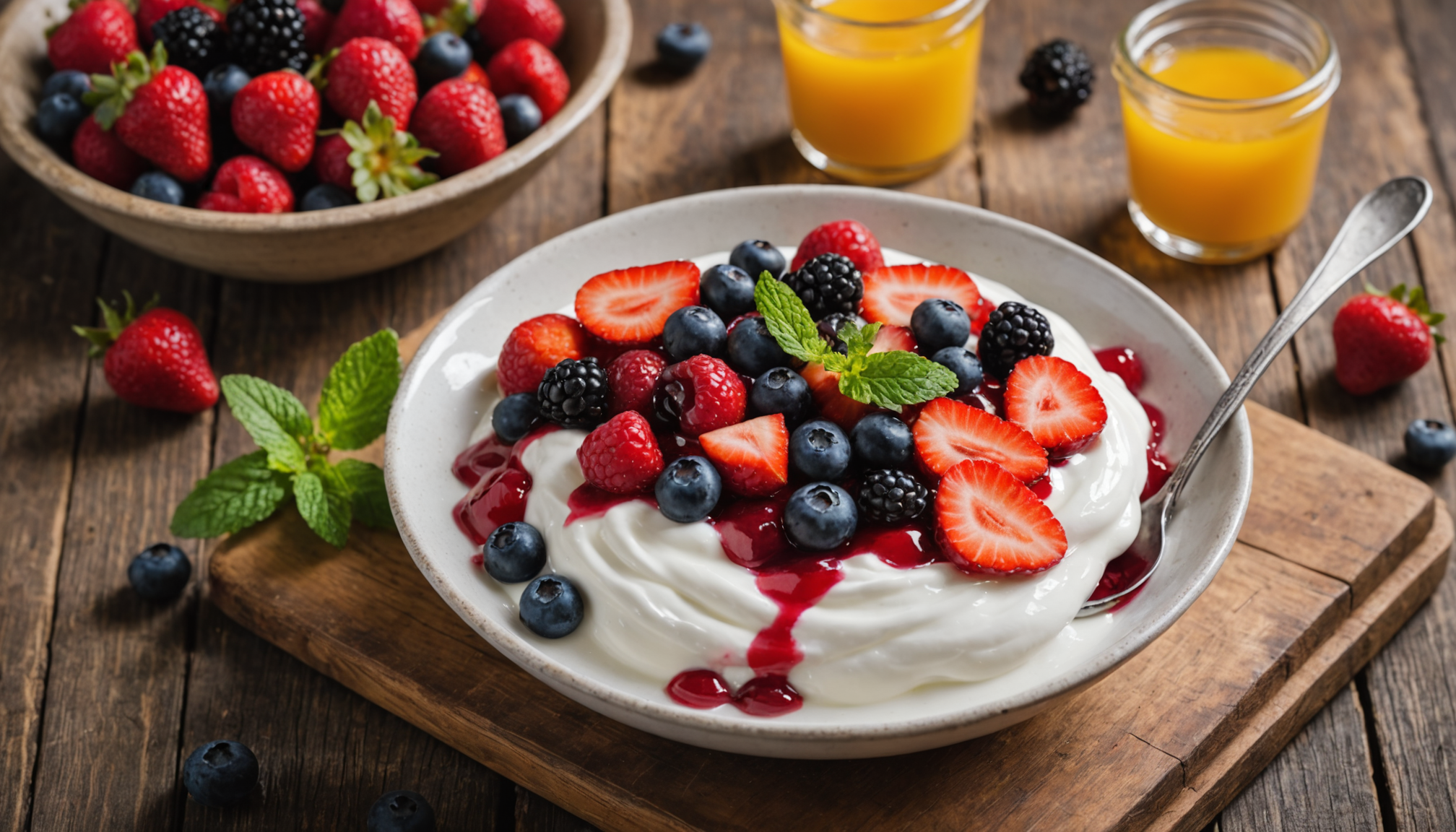 For those navigating the whirlwind of daily tasks, finding healthy snacking solutions can become a game-changer. It’s critical to keep your energy levels up throughout the day, and well-chosen snacks can be your best allies. Think of snacks not just as mini-meals, but as opportunities to infuse more nutrients into your diet without adding significant preparation time.
For those navigating the whirlwind of daily tasks, finding healthy snacking solutions can become a game-changer. It’s critical to keep your energy levels up throughout the day, and well-chosen snacks can be your best allies. Think of snacks not just as mini-meals, but as opportunities to infuse more nutrients into your diet without adding significant preparation time.
When considering your snack options, focus on combinations that provide proteins, healthy fats, and fiber to achieve balanced nutrition. Items like Greek yogurt topped with fresh fruit offer a delightful mix of protein and probiotics, while nut butter paired with apple slices delivers satisfying crunch and creamy goodness alongside healthy fats. Avocados, with their creamy texture and nutrient density, can be enjoyed as guacamole with whole grain chips or spread on whole grain toast.
Preparing healthy snacks in advance can alleviate those frantic moments when hunger strikes. Set aside time to portion out snacks into individual servings to grab-and-go. Ideas include trail mix featuring a mix of nuts, seeds, and dried fruit; veggies such as carrot sticks or cucumber slices paired with hummus or guacamole; or whole-grain crackers with cheese. These quick and easy-to-make snacks prioritize both nutrition and taste, helping you resist the pull of less healthy alternatives during busy days.
Don’t forget about the power of smoothies. They can act as nutrient powerhouses and take mere minutes to prepare. Combine leafy greens like spinach or kale with fruits, yogurt, and a scoop of nut butter or protein powder for a filling mini-meal that’s portable and delicious. Consider setting up a smoothie station in your kitchen, stocked with ingredients so you can blend a nourishing treat effortlessly.
It’s also a good idea to keep an eye on the nutritional content of your snacks. Many processed options may seem convenient but can be loaded with added sugars, unhealthy fats, or preservatives. Always read labels and choose products that emphasize whole food ingredients. By cultivating mindfulness in your snack choices, you can ensure that you’re nourishing your body rather than merely filling your stomach.
Incorporating these healthy snacking strategies into your routine will elevate your food game and support the busy lifestyle you lead. Not only will you maintain your energy and focus, but you’ll also foster a positive relationship with food, viewing snacks as an essential part of your holistic wellness journey.
- What are some easy healthy snacks I can prepare in advance?
- Consider preparing portioned packs of trail mix, yogurt cups with fruit, or hummus with veggie sticks. These snacks can be made in bulk and stored for quick access throughout the week.
- How can I avoid unhealthy snacking habits?
- Planning and preparing your snacks in advance is key. Keep healthy options readily available at home or in your bag to reduce the temptation of reaching for processed snacks when hunger strikes.
- Are there specific snacks that can help boost energy?
- Snacks high in protein, healthy fats, and fiber—like nut butter with bananas, Greek yogurt with granola, or hummus with whole grain crackers—can provide sustained energy and keep you feeling full.
- How do I choose healthy snacks when I’m on the go?
- Look for items that are nutritious and portable, such as protein bars with natural ingredients, individual servings of nut butter, or pre-packaged vegetable snacks. Reading labels can help you make better choices.
- Can smoothies be a good snack option?
- Yes! Smoothies can be nutrient-dense snacks that are quick to prepare. Blend greens, fruits, and protein sources for a satisfying and healthy treat.
- Should I avoid snacks completely if I want to eat healthy?
- No, snacking can be part of a healthy diet. It’s about choosing the right snacks that provide nutrients rather than empty calories, helping to sustain energy and satisfy hunger.
- How can I ensure my snacks are balanced?
- A good rule of thumb is to combine foods that offer protein, healthy fats, and fiber. For example, pairing fruit with nut butter or yogurt with whole grains creates a balanced snack.
Meal prep for the week ahead
For busy people, meal prepping for the week ahead can transform your eating habits, making healthy eating made simple and effective even amidst a hectic schedule. The key is organization and planning, which can significantly cut down on time during the week and remove the stress of last-minute food decisions.
Start with a meal plan. Dedicate a few minutes each week to decide what you’ll eat for breakfast, lunch, and dinner. This not only guides your grocery shopping but also ensures you have a balanced intake of nutrients throughout the week. Once you have your meal plan, create a grocery list that reflects the ingredients you need. Opt for fresh, organic produce when possible to maximize flavor and nutrition. For example, using seasonal fruits like strawberries in spring or squash during autumn can elevate your dishes while supporting local farmers.
Next, consider batch cooking staple items like grains (e.g., brown rice, quinoa, oats) and proteins (e.g., chicken, lentils, or chickpeas). After cooking, portion these out into containers. For example, a base of quinoa topped with roasted vegetables and grilled chicken can be easily reheated. To keep meals interesting, prepare different sauces or dressings that can be quickly mixed in before serving. This approach not only saves time but allows for variety throughout the week.
Don’t forget about snacks! Preparing healthy snacks in advance can be as simple as portioning out nuts, hummus with veggie sticks, or yogurt parfaits layered with granola and berries. Having these ready to grab ensures you make better choices instead of succumbing to unhealthy temptations. A mix of protein and fiber in your snacks can help keep energy levels stable, particularly for those with a packed schedule.
For optimal efficiency, choose one day of the week—like Sunday—to dedicate to meal prep. Utilize your oven, stovetop, and a slow cooker or instant pot simultaneously to get the most done in the least amount of time. Roast several trays of vegetables, cook a large pot of soup, and prepare a grain salad all at once. This method also reduces food waste since you’ll have prepped meals that will be consumed rather than left to spoil.
When storing your prepared meals, use clear, labeled containers to make it easy to grab what you need quickly. Consider using glass containers for reheating to avoid chemicals leaching into your food, ensuring safety while maintaining quality. Furthermore, frozen meals can last for weeks, so do not hesitate to prepare an extra batch to store for emergencies when time runs short.
Finally, don’t underestimate the power of freezer-friendly meals. Soups, stews, and casseroles can be made in large quantities and frozen in individual portions, providing wholesome options on days when you have zero time to cook. Just remember to allow for cooling before storing to maintain their texture and flavor.
By integrating these practical meal prep strategies into your routine, you can streamline your cooking process and ensure that healthful eating remains accessible, even in a busy lifestyle. Meal prepping helps you stay on track with your nutritional goals while saving both time and money, all while making healthy eating made simple.
New Customers Offer!
Free Gift for the new customer
$24 Value, When You Subscrib Visit Thrive Market
